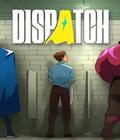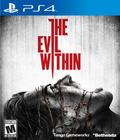Resident Evil 4 was a real departure for the series. It threw away many of the franchise's standbys in favor of what amounted to "The Thing" reinvisioned as an action movie. The later games in the series took that even further and became more action-oriented. The Evil Within, directed by RE's Shinji Mikami, feels inspired by RE4's village section, rather than the game's more action-oriented parts. There's a lot of shared lineage here despite it being a completely new IP. Unfortunately, while The Evil Within may be a spiritual successor to Resident Evil 4, it doesn't quite live up to its inspiration.
The Evil Within follows Detective Sebastian Castellanos, who's a member of the Krimson City Police Department. One day, he's called to a local mental hospital after there are reports of a mass murder. A few minutes after he arrives, Sebastian is ambushed by a hooded figure. He awakens in a constantly shifting hellish landscape that's populated by monsters and a few human survivors. Sebastian must discover the secret of this twisted version of reality and escape before he succumbs. Along the way, he encounters friendly and dangerous people in addition to a host of horrific monsters.
I found The Evil Within a bit too silly to be scary. It's certainly atmospheric, but the game just has too many things working against it. The dialogue is frequently too unnatural to properly convey the characters' actions. The events make sense within the context of the plot, but they make it difficult to maintain the atmosphere. Each new area feels distinctive but not in a way that aids the horror. The enemy design is also largely generic. There are a few cool designs, like the weird stalking monster The Keeper, but even then, he feels a bit like a lower-budget Pyramid Head. It's weird in a way that either engrosses you or drains the atmosphere from the room, depending on how you take it. In that way, it's very reminiscent of Resident Evil at its weirdest.
The first two chapters resemble a stealth title that emphasizes hiding in closets and avoiding an unstoppable enemy. Once you hit the third chapter, however, the game changes tones and is more what you'd expect from a spiritual successor to Resident Evil. You get a gun and encounter some zombie-like enemies, and the pace really changes. If you played Resident Evil, the core controls and gameplay will feel very similar: context-sensitive movement controls, over-the-shoulder aiming, and a melee button to smash crates or take out enemies. The biggest change is that you can aim and move at the same time, and you can use a stealth button to sneak around enemies.
Unlike RE4's Leon Kennedy, Sebastian is surprisingly weak and vulnerable for a police detective who frequently jump-kicks things. You generally do not want to get into fights with enemies. They do a lot of damage, require a lot of bullets to take down, and you lack the ability to fight them head-on. You even have trouble running away because Sebastian runs out of breath faster than a chain smoker, and he's forced to stop until he catches his breath. You either need to stealthily sneak up on enemies or use various environmental traps or one-shot items to take them out. The most iconic weapon, the Agony Crossbow, allows you to craft crossbow bolts that can do all sorts of damage to enemies.
The enemies in The Evil Within are quite durable. If you down them with regular attacks, they'll get back up and come at you again. The easiest and most effective way to kill an enemy is to set him on fire. Beyond certain tools, the most effective way to do this is with matches. You can set an enemy on fire with a match when he's been downed by repeated damage or stunned by a shot to a weak point. This is an instant kill and can even set other enemies on fire for chain reactions. Matches are limited, of course. You can only carry a few at a time, and you don't know when you'll get more. In addition, matches are not context-sensitive. You can set anybody on fire, even regular corpses, so you must pay attention and see if an enemy is going to get up again. Smart match usage can let you trim down enemies, but if you're not careful, you'll have a much harder time keeping enemies down.
Trying to engage in a straight fight is often suicide. You'll get swarmed and outnumbered, and you just don't have the supplies and ammunition to win without expending valuable resources. The Evil Within rewards players for using traps, carefully choosing their shots, making proper use of their matches, and generally going out of their way to defeat enemies. The sequences that use this to their full advantage are some of the most fun in the game. Every enemy you can take down without expending resources is a valuable bullet or medical syringe you'll have for a real emergency down the line. Knowing when to run, when to fight, and when to hide is key to success, and when these moments work, they are wonderful. The most fun I had was trying to figure out the almost puzzle-like environments that encourage me to take down as many enemies as possible without engaging in a straight fight.
When avoiding direct combat isn't an option, the game feels awkward and unenjoyable. It's clear the intent was to make you not want to engage in fights, so it's odd that fights occur so frequently. RE4 had solid and visceral combat that made it fun to play. Nothing in The Evil Within comes close to that. As the game progresses, the cool, fun and engaging trap gameplay gradually gives way to more straightforward fights. You still have limited ammo and have to think about your resources, but it's never quite as much fun as in the earlier chapters.
Most heavy-combat areas have a reusable trap or tool that you can use to kill enemies with minimal expenditure of ammo or health. Some of them are really awkward to use, so you're either stuck with the more reliable, ammo-wasting method or trying to position enemies in exactly the right spot. It isn't fun when compared to the more freeform nature of the stealth areas. Even boss fights kind of suffer from this, although many are more like puzzles than straight-up skirmishes.
The Evil Within is a surprisingly low-budget-looking game. The character models aren't great. Some of the art and atmospheric design compensate for the average graphics, and there are some really striking areas. Unfortunately, there are some really poor design decisions. The game is in a stretched letterbox aspect ratio, seemingly in an attempt to mimic a cinematic experience, but the result is that it feels incredibly cramped. With traps and tiny details being such an important part of the game, the minimal amount of screen real estate available feels constricting, not atmospheric. The frame rate is also quite bad, frequently hitching and jerking without much rhyme or reason. The voice actors are making an effort, but the dialogue is stilted and awkward — possibly the result of a Japanese script that's been somewhat haphazardly translated into English. The actors clearly outclass the script they're given, but they sometimes manage to make it work.
Despite The Evil Within's attempts to mimic RE4, it plays like a game that preceded RE4 instead. It has many minor flaws, annoying problems and nagging issues that its spiritual predecessor didn't have. There are times it comes so close to brilliance, and those moments make the game worth playing, but the frustrating portions can easily eclipse the rest of the title. You have to be willing to work with it to see the good within. Many of the design decisions make the player want to give up rather than work past the frustrating elements to reach the fun.
Score: 7.0/10
More articles about The Evil Within











 The Evil Within is a new survival horror game, an experience which Resident Evil creator Shinji Mikami defines as one that pushes the limits of fear and exhilaration.
The Evil Within is a new survival horror game, an experience which Resident Evil creator Shinji Mikami defines as one that pushes the limits of fear and exhilaration.

































